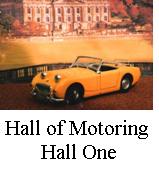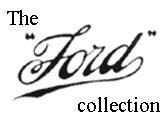Henry Ford was destined to become one of the greatest industrialists of the 20th Century, completing his first car during 1896, a second car was running by 1899 sufficiently impressing his financiers to form the Detroit Automobile Company. Unfortunately, the cars failed to sell and Fords ideas differed from those of the stockholders, so he left. In June 1903 the Ford Motor Company was incorporated and Henry Ford could concentrate on producing an affordable car for the people. His mission to motorise the world had begun.
A significant landmark in motoring history occurred on the 1st October 1908, the day Ford launched the Model T. For the sake of economy all other models were dropped. Gradually as the gamble paid off and the demand grew, the methods necessary for mass-production were applied to the new car. They were not new, having been applied in America to guns, watches and to motor cars by Henry Leland of Cadillac, who had already preached, and practised, parts standardisation and interchangeability thanks to precision in manufacture. The precision was achieved by the development of specialised machine tools. Ford's innovation was the moving assembly line. At first it was a simple rope and pulley system that kept the chassis moving while the worker added his part to chassis after chassis. No longer did workers spend time going back and forth to collect parts and bring them to the chassis, now the chassis came to their work station where they already had a stock of parts. Time saved equalled money saved.
Fords Detroit factory was at the time the largest and most modern in the world. The company soon reaped the rewards for its efficiency and low unit costs and Ford began cutting his prices. In 1911 a Touring model cost $950, but by 1925 it was down to just $290, yet Ford still averaged $50 profit per car. By 1926 Model T sales were flagging. As road conditions improved, customers wanted refinement and comfort rather than unsophisticated ruggedness. Ford could not accept that times were changing. However, even he could not ignore falling sales, and Model T production finally ended in 1927.
1/32nd scale kit.
Built by Rod.

Rod built this model from the box, or packet as it was back then, in the late 1950s. All tube glue and brush applied Humbrol enamel paints. The old Humbrol metallic brass paint really wasn't up to much but half a century ago it was pretty much all there was for the modeller to use. Today we have bare metal foils, Al-clad paints and Mr Hobby colours, don't know we're born!
RETURN TO -

